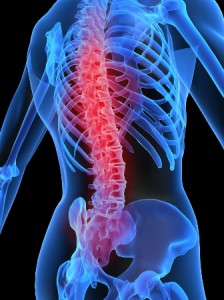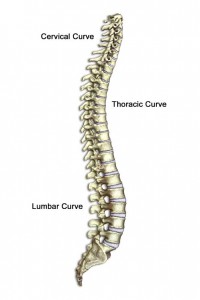 A little known side effect for astronauts travelling to the outer reaches of space has been a high incidence of chronic low back pain upon their return to earth, or more specifically, upon their return to the forces of gravity on their spine.
A little known side effect for astronauts travelling to the outer reaches of space has been a high incidence of chronic low back pain upon their return to earth, or more specifically, upon their return to the forces of gravity on their spine.
So far over 430 Virgin Galactic ‘Astronauts’ have prepaid up to $20,000 for commercial space flights, all with the dream of seeing the magnificent curved earth vistas from afar, and performing mid-air somersaults in the weightlessness conditions of outer space. But do they know the side effects?
Half of all space astronauts will experience a condition called Space Adaptation Syndrome, which arises as the body’s systems struggle to adapt to the loss of gravity. Loss of bone density and muscle mass, shrinking of their heart muscle, and swelling of their face due to fluid redistribution from their legs are all part of what space travelers will experience as a result of Space Adaptation Syndrome.
Lower back pain upon return to earth is among one of the symptoms that astronauts can experience from this syndrome. On earth, our spinal discs oscillate between absorbing fluid, when we are in bed sleeping (off-loading the spinal discs), and pushing fluid out of the discs during the day, when we move about and load our spine with gravity.
The continuous zero gravity condition of space means that the spinal discs continue to absorb fluid and the natural curves in the spine begin to flatten out. This flattened spinal shape leaves the space traveler vulnerable to low back pain upon their return to earth, as suddenly, their spine is forced to handle normal loads again.
 Our normal spinal curves have been ingeniously designed to dissipate axial (vertical) forces evenly amongst all the spinal discs and joints. These normal curves act to biomechanically “spread the load” of force as we walk and move about in our daily life. A flattened spine (as in the case of astronauts) leads to undue force and pressure being translated into one or a few vertebrae, or into the joints supporting the pelvis and spinal junctures. These changed force loading patterns in the spine cause pain, typically experienced as low back pain.
Our normal spinal curves have been ingeniously designed to dissipate axial (vertical) forces evenly amongst all the spinal discs and joints. These normal curves act to biomechanically “spread the load” of force as we walk and move about in our daily life. A flattened spine (as in the case of astronauts) leads to undue force and pressure being translated into one or a few vertebrae, or into the joints supporting the pelvis and spinal junctures. These changed force loading patterns in the spine cause pain, typically experienced as low back pain.
Further to these biomechanical changes observed in the spinal curves of astronauts, zero gravity environments cause deterioration in the muscles that control the normal spinal curves and hold you up against gravity. This muscle deterioration or wastage further exposes space travelers to the perils of low back pain, and highlights the need for them to undertake rigorous rehabilitation and corrective exercise programs upon their return.
As with changed spinal biomechanics and low back pain conditions experienced here on earth, space agency rehabilitation and corrective exercise programs concentrate on developing correct activation patterns and strength in the muscles that act as our deep lumbar stabilisers (in the trunk) and those that stabilise our pelvis. As well as strengthening their muscles around the trunk and pelvis, there is an emphasis in the corrective exercise programs for astronauts on re-teaching or re-learning the ‘normal’ movement patterns and spinal loading patterns that have deteriorated as a result of the spinal flattening in outer space. As such, we can learn a lot from the space agency corrective exercise programs. Their goals, objectives, and methodology also apply to those who experience low back pain from more earthly living!
